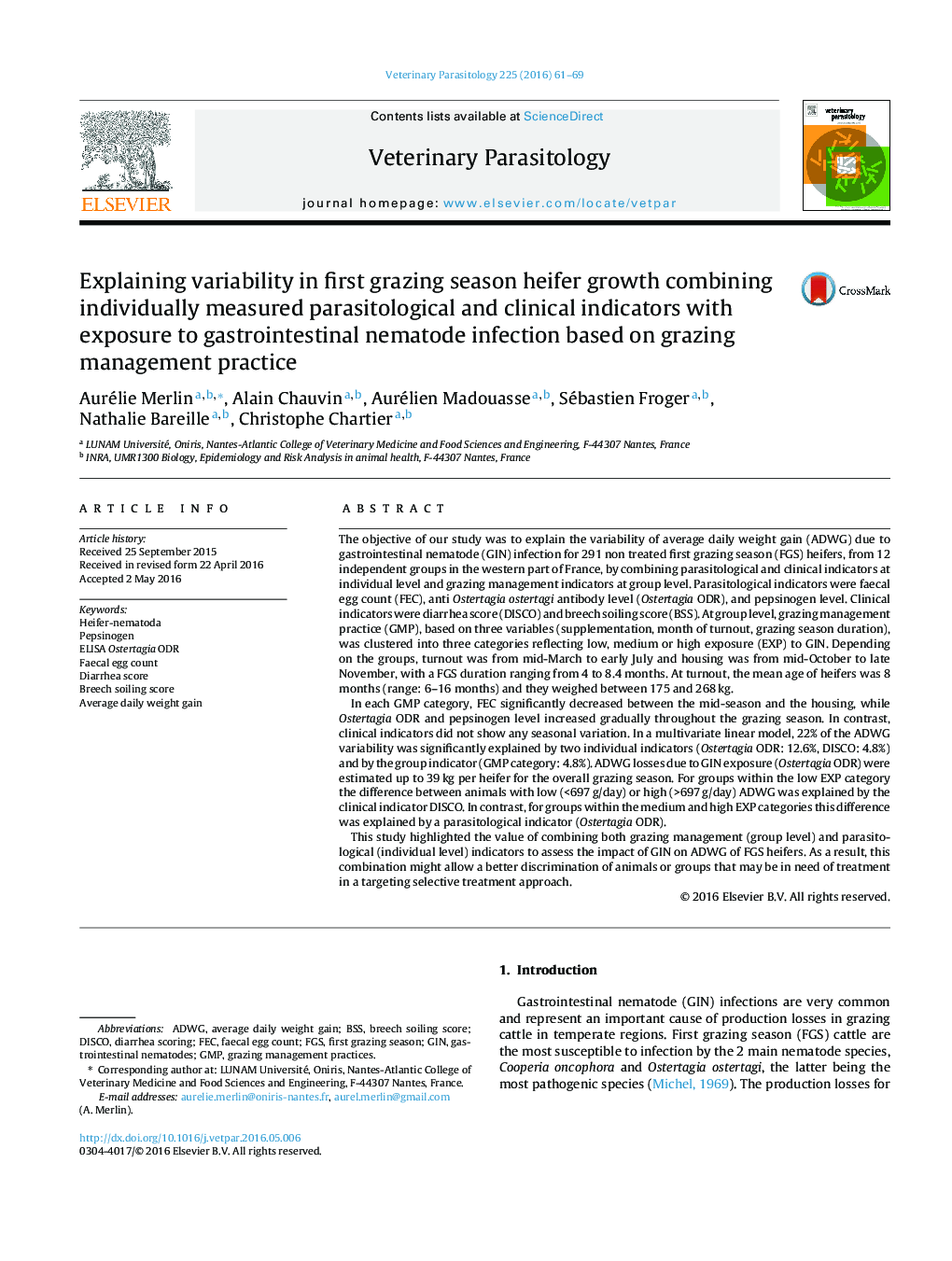| کد مقاله | کد نشریه | سال انتشار | مقاله انگلیسی | نسخه تمام متن |
|---|---|---|---|---|
| 5802120 | 1555651 | 2016 | 9 صفحه PDF | دانلود رایگان |
- Gastrointestinal nematodes (GIN) can cause growth retardations in heifers.
- The origin of the variability of weight gain in heifers was assessed.
- Grazing management practices induced different levels of GIN exposure.
- Weight gain decreases were due to parasitism in groups sufficiently exposed to GIN.
- In these groups, individual anti O. ostertagia antibody level explained weight losses.
The objective of our study was to explain the variability of average daily weight gain (ADWG) due to gastrointestinal nematode (GIN) infection for 291 non treated first grazing season (FGS) heifers, from 12 independent groups in the western part of France, by combining parasitological and clinical indicators at individual level and grazing management indicators at group level. Parasitological indicators were faecal egg count (FEC), anti Ostertagia ostertagi antibody level (Ostertagia ODR), and pepsinogen level. Clinical indicators were diarrhea score (DISCO) and breech soiling score (BSS). At group level, grazing management practice (GMP), based on three variables (supplementation, month of turnout, grazing season duration), was clustered into three categories reflecting low, medium or high exposure (EXP) to GIN. Depending on the groups, turnout was from mid-March to early July and housing was from mid-October to late November, with a FGS duration ranging from 4 to 8.4 months. At turnout, the mean age of heifers was 8 months (range: 6-16 months) and they weighed between 175 and 268Â kg.In each GMP category, FEC significantly decreased between the mid-season and the housing, while Ostertagia ODR and pepsinogen level increased gradually throughout the grazing season. In contrast, clinical indicators did not show any seasonal variation. In a multivariate linear model, 22% of the ADWG variability was significantly explained by two individual indicators (Ostertagia ODR: 12.6%, DISCO: 4.8%) and by the group indicator (GMP category: 4.8%). ADWG losses due to GIN exposure (Ostertagia ODR) were estimated up to 39Â kg per heifer for the overall grazing season. For groups within the low EXP category the difference between animals with low (<697Â g/day) or high (>697Â g/day) ADWG was explained by the clinical indicator DISCO. In contrast, for groups within the medium and high EXP categories this difference was explained by a parasitological indicator (Ostertagia ODR).This study highlighted the value of combining both grazing management (group level) and parasitological (individual level) indicators to assess the impact of GIN on ADWG of FGS heifers. As a result, this combination might allow a better discrimination of animals or groups that may be in need of treatment in a targeting selective treatment approach.
Journal: Veterinary Parasitology - Volume 225, 30 July 2016, Pages 61-69
